Booksmart Is the First Truly Evolved High School Movie

As a full-on Booksmart evangelist, I’ve spent the last month holding people hostage, making them sit through a robust list of everything I love about this movie, which stars Beanie Feldstein and Kaitlyn Dever as brainiac BFFs trying to make up for lost fun during the last night of high school. However, it's come to my attention that people have lives to live and places to be. So let me sum up, in two words, what makes Booksmart the most evolved movie of its kind: Blue. Jumpsuits.
There’s a point in the movie when, if you are a female between 18 and 55, you think you know exactly what’s coming. Feldstein’s Molly and Dever’s Amy have decided they are going to a party, and now they need something to wear. The 80 percent of my brain devoted to high school movies twitched with recognition. Here comes the Booksmart equivalent of Laney’s red minidress in She’s All That, I thought. Here comes the homage to Dionne blotting Tai’s lipstick in Clueless. Here comes that scene like the Breakfast Club one in which Molly Ringwald gives Ally Sheedy a pastel overhaul.
But nothing like that happens. Molly and Amy pull on matching blue jumpsuits that are short-sleeved and a little loose; the whole look has a French-girl Ghostbusters vibe. They’re out the door in two minutes flat—in flats. They look comfortable.
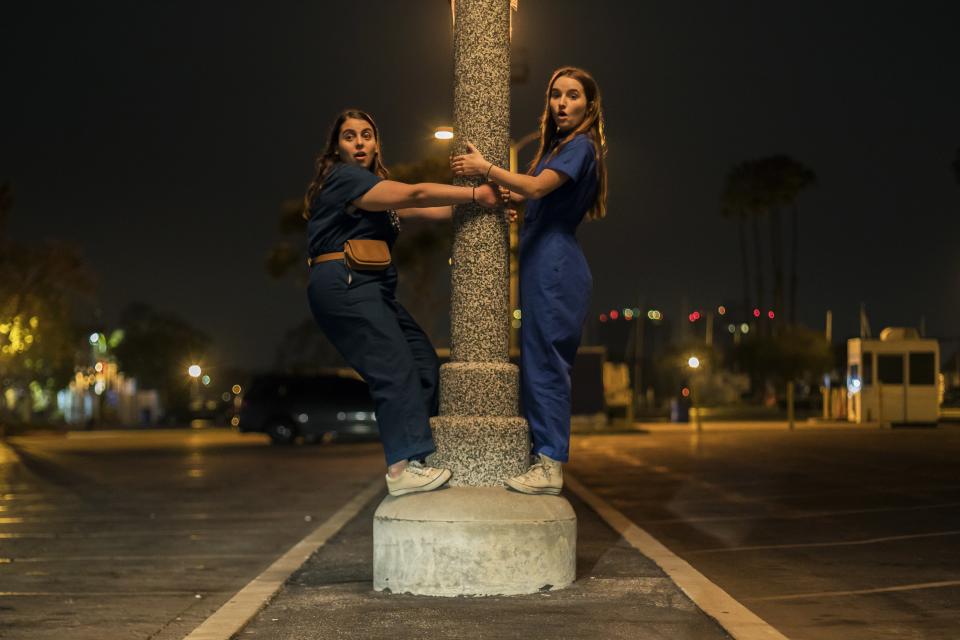
BOOKSMART
This is the part of the film when my reporter’s objectivity went out the window. I will be 35 in August, and I have never seen a high school movie that didn’t make a makeover a key point. I am a feminist and a pop-culture critic, and yet I realized—I’d completely internalized the notion that a cocktail dress equals character growth.
By the end of the movie, Booksmart had fully schooled me in everything a teen film can do—and everything it doesn’t have to be. And I’m not alone in my fangirling. So far the movie has rung up a 99 percent on Rotten Tomatoes. So how did a flick about Gen Z kids become the most empowering watch for women this year? To find out, I talked with the (nearly all female!) team behind it: stars Feldstein and Dever, producer Jessica Elbaum, coproducer/screenwriter Katie Silberman (who cowrote the script with Susanna Fogel, Emily Halpern, and Sarah Haskins), and director Olivia Wilde.

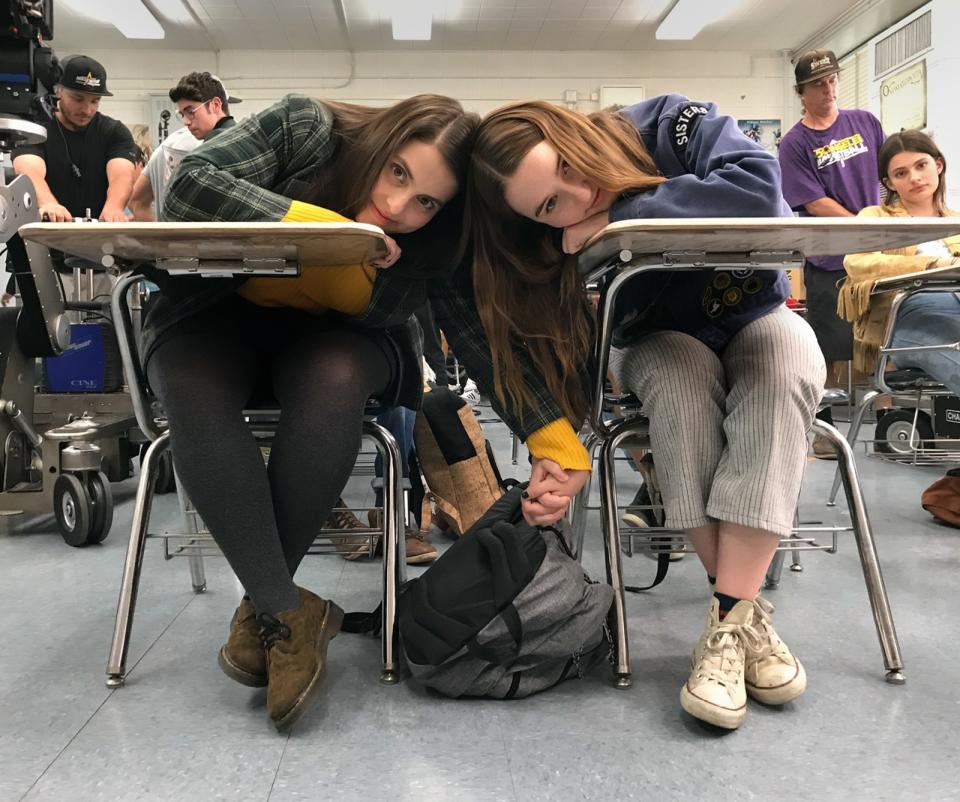
Glamour: OK, let’s talk about these seminal onesies. Give me their origin story.
Kaitlyn Dever: Normally in a movie, when you see a montage of girls getting ready, you see them in a short dress and heels. We didn’t want to do that. Beanie and I always did our costume fittings together, and we saw these in wardrobe and put them on. They were super comfy, and we were like, "Wait a second, what if we wore these?" Olivia made it happen.
Olivia Wilde: April [Napier, Booksmart’s costume designer,] and I were adamant that the jumpsuits were the perfect idea. It wasn’t just the Rosie the Riveter reference we liked—it was the idea of being best friends with someone and slowly melding into the same person. "Are those your pants or my pants? Who knows anymore?" I presented it to the studio as something that could be no other way.
The thing that struck me about that scene was the way it nixed the whole concept of a makeover. Molly and Amy change clothes, but they don’t change.
Beanie Feldstein: They don’t have that "take the ponytail down, take the glasses off" moment. They never want to alter themselves in any way.
Katie Silberman: This is a best-friend story—there’s no need for a makeover. If I could spend six hours a night telling my best friends how beautiful they are, I would. It makes me cry how beautiful my friends are.
That sentiment makes it into the movie too. Molly and Amy spend a lot of time telling each other how great they look, and how great they are.
Jessica Elbaum: We felt like we were making an anthem for this generation, and this generation roots for each other. Women Beanie and Kaitlyn’s age, they have each other’s back in a way that’s real. [In earlier generations] we sort of tried it, but with this generation, it’s genuine.
Katie: This generation of women has grown up understanding Lean In, they’ve seen women in positions of power. There’s a difference between seeing that as a child and not seeing it until your thirties. These young women are so progressive and brave.
Olivia: I wanted the film to remind women that we’re each other’s greatest allies. There’s no reason to hold each other down. Not only is there enough space for all of us, but there’s such great possibility when we come together. I felt this so clearly as the Time’s Up movement came together. I’d be in meetings with other actresses, and it would be the first time we’d ever been in the same room and we weren’t competing. It seems obvious, but I can’t tell you how intense the culture of competition and misogyny is in this industry—it’s often compared to high school.
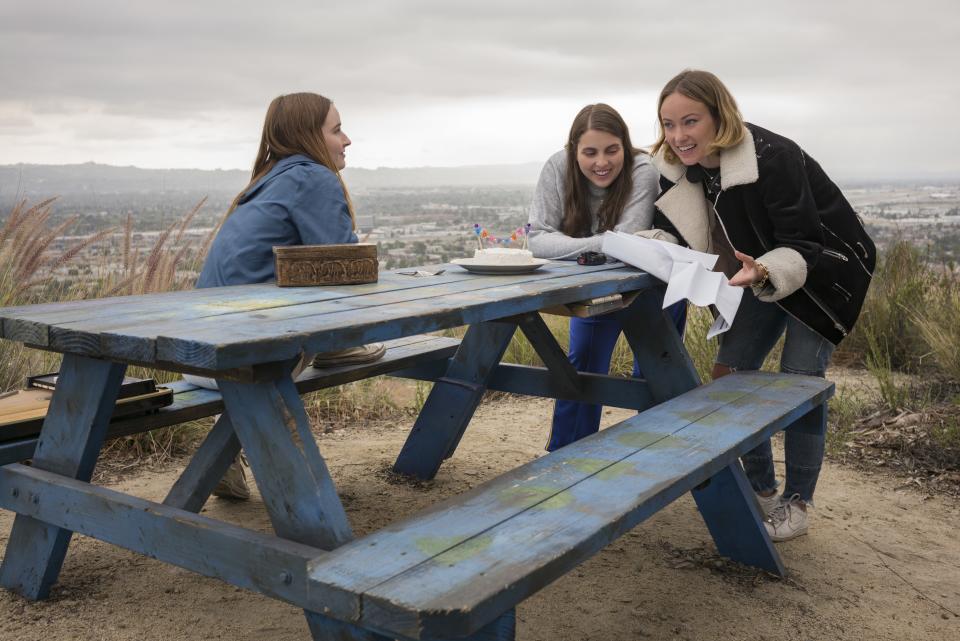
BOOKSMART
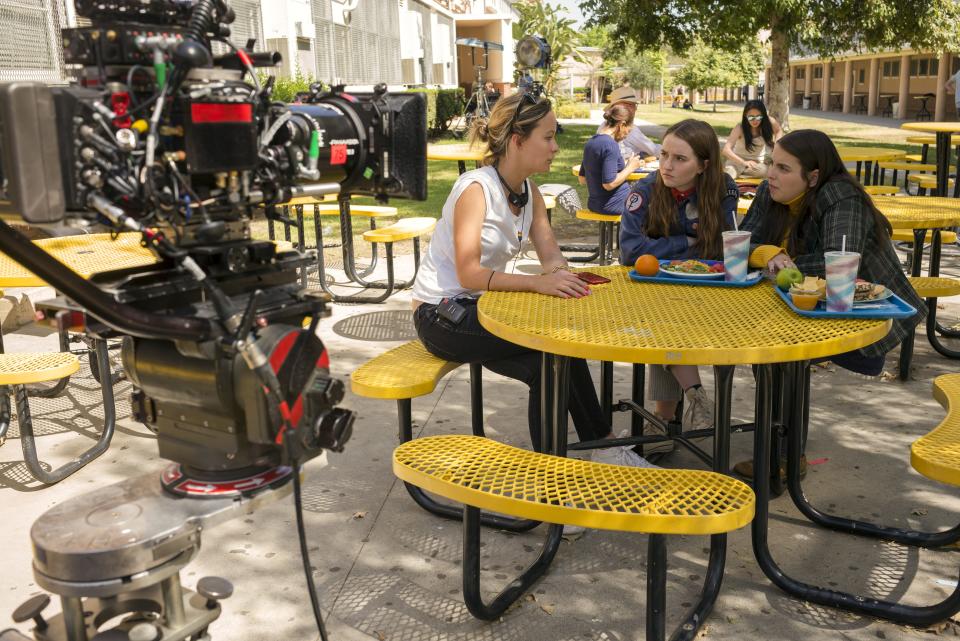
BOOKSMART
Since we’re talking about the industry—what high school movies were important to you, growing up, and do you look at them differently now, after making a more empowered twist on the archetype?
Katie: I loved Fast Times at Ridgmont High and Dazed and Confused.
Kaitlyn: Weird Science was a big one for me.
Beanie: The one I’ve watched most is Mean Girls.
Jessica: I loved Fast Times and Reality Bites and Heathers and Clueless and Breakfast Club, all of those. Has this experience led me to look at those differently? I don’t think so. Those movies were anthems for our generation. They helped me with whatever I was going through. I don’t look back and think, I can’t believe I connected to that. But I do think Booksmart is reinventing the genre and opening doors for more movies like it.
Olivia: The genre is what allowed me to survive adolescence. I grew up watching Breakfast Club, Dazed and Confused, Clueless. But I think about a movie like Clueless now and think, Wait a minute, what was it teaching me? That in order to be great, I had to have a spunky little makeover? The film does seem aspirational—I loved it so much, but it made me want to be different than who I was. I value that movie without valuing that part of it.
How did having a team that was largely female influence how Booksmart came together?
Jessica: We just felt very cognizant of what we wanted to say. And we did have men, but they were beautiful, evolved men who who have lots of women in their lives. There was no "Ugh, women really talk this way?" We had guys working on this film who were saying, "I’m so happy this movie exists for my daughters."
Katie: We all knew how to be authentic about female friendship. We didn’t want this to be "female Superbad," with women just saying things men say. We wanted it to be kind. People think comedy can’t be nice or earnest because you’ll lose the humor, but we set a challenge for ourselves—we wanted to make it funny without there really being a bad guy.

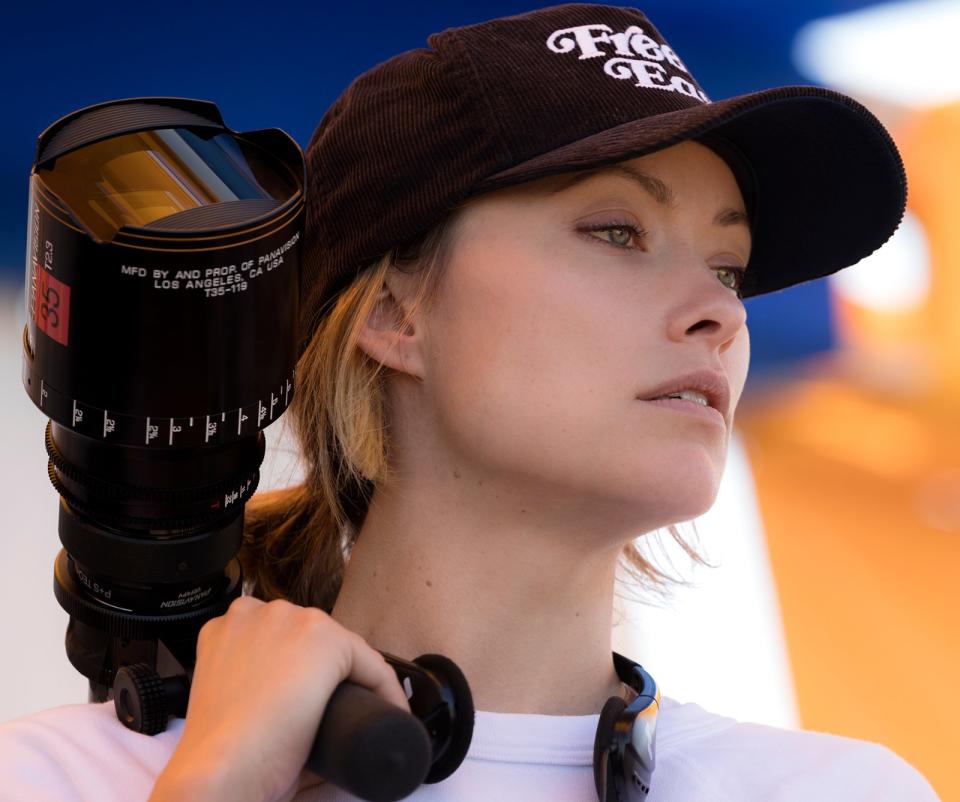
Yeah, there’s a girl-on-girl revenge or clique-versus-clique dynamic that just doesn’t exist in this movie. That’s another hallmark of the high school movie Booksmart discards.
Kaitlyn: It asks the audience to maybe judge people a little less, and to treat each other with kindness and compassion. You never know—the popular kid might not be mean. The party girl might not really want to be a party girl. There’s always more to a person.
It feels like Booksmart is hitting at this moment where we are seeing, more than ever, female friends being outrageously supportive of each other onscreen. It fits nicely with Broad City, Insecure, PEN15, The Bold Type….
Beanie: And Playing House [the USA series starring Lennon Parham and Jessica St. Clair]! That’s an obsession of mine.
Kaitlyn: A best-friend relationship can be so intense, and reading this script and seeing that—it was so exciting for me, because I rarely get sent a comedy for young women. Now I’m hearing girls who have seen Booksmart say that it makes them feel very seen. I think people are craving stories like this.
Katie: What I love about so many shows and movies like that is that real friends—like Abbi and Ilana in Broad City or Maya and Anna in PEN15—make them. It’s not a coincidence that those friendships feel so lived-in and authentic.
How did you create that kind of real-friend vibe on set?
Beanie: Kaitlyn and I lived together [before and during the shoot]. We had a two-bedroom rental in West Hollywood. We wanted to be at a point where we had our own jokes, our own rapport, our own snacks. By the time we were filming, we were like, "It’s time for her to have her iced tea!" "Oh, I know where she is, she must be in the bathroom!" We were so connected. I would have been devastated if I watched Booksmart and found out that me and Kaitlyn weren’t friends. So the good news is: It’s a very real love.
Megan Angelo is the author of Followers, which will be published in January 2020. After watching Booksmart, she tried to pull off this blue jumpsuit but ultimately was unable to do so.
These interviews have been edited and condensed for clarity.
Originally Appeared on Glamour

